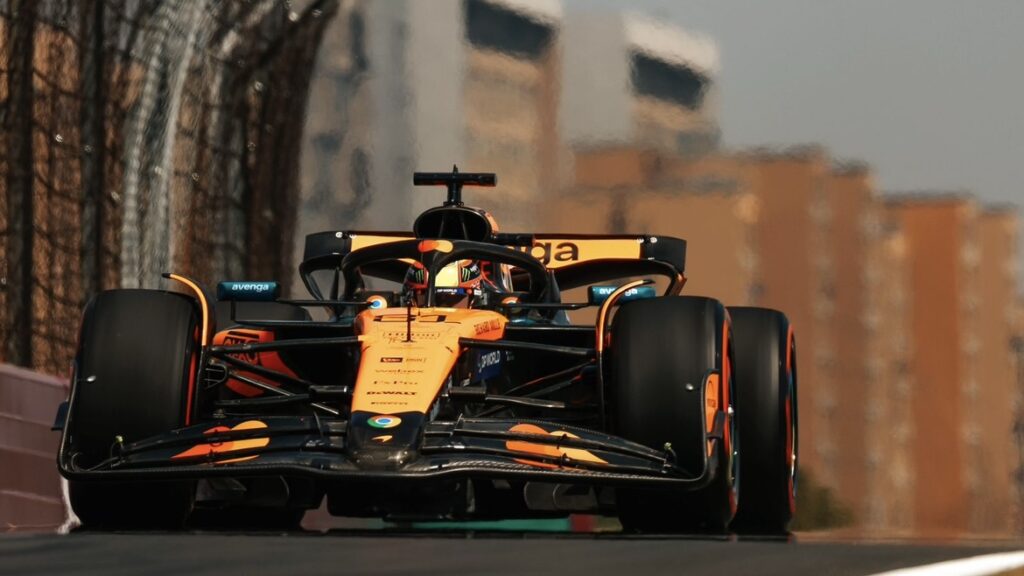In the only practice session, teams opted for short race simulations with different fuel loads.
First Sprint weekend of the 2025 season at the Shanghai circuit in China. Just like in the 2024 season, teams have only one practice session before heading straight into Sprint Qualifying. Therefore, FP1 is crucial for understanding the car setup and track conditions.
For this first Sprint event of the season, Pirelli has chosen to bring the same compounds as in the 2024 edition: C2, C3, and C4, corresponding to Hard, Medium, and Soft, respectively. In the previous Chinese Grand Prix, all drivers made two pit stops, with race winner Max Verstappen opting for a Medium-Hard-Hard strategy.

In the first practice session, the fastest driver was once again Lando Norris, who pushed hard from the opening minutes of Friday, finishing over four-tenths ahead of Charles Leclerc’s Ferrari in second place. The two Red Bulls of Max Verstappen and Liam Lawson struggled, finishing 16th and 18th, respectively. However, the reigning world champion did not attempt a lap on soft tires.
An important factor to consider is the resurfacing of the track, carried out in October 2024. This means the asphalt is new, and the track will be dirty and constantly evolving due to months of inactivity. Therefore, tire degradation will be crucial, making the C2 and C3 compounds the most suitable for the race.
Race pace analysis FP1 China: Hhre are the times from this morning
As often happens in Sprint format weekends, race simulations are less relevant because some drivers prefer to focus on the Sprint race, while others concentrate on the Sunday race, resulting in very different fuel loads. Therefore, the reported times should not be considered, and instead, the trend of these short simulations will be important.
All drivers opted for the medium tires, which will definitely be the race tire. In all simulations, a tire drop-off can be seen after about 5 laps, mainly due to the new asphalt and the low grip of the track, which, however, will continue to improve.
As for McLaren, which is considered the favorite ahead of the weekend despite the new FIA restrictions, both drivers’ simulations were quite consistent. However, from Lando Norris’ long run, it’s clear that lap times began to rise from the fifth lap onward. Ferrari, on the other hand, did not perform any long runs, focusing more on single-lap speed.
The driver who completed the longest race simulation was our Andrea Kimi Antonelli, who completed an impressive 10 laps. His long run was very consistent in the first 8 laps, but the times rose significantly in the last two. The same trend can also be seen in Max Verstappen’s race simulation, although he was likely simulating the first stint of Sunday’s race, with a high fuel load.
PHOTO: Mclaren F1 Team, Mercedes-AMG PETRONAS F1 Team, GPKingdom

